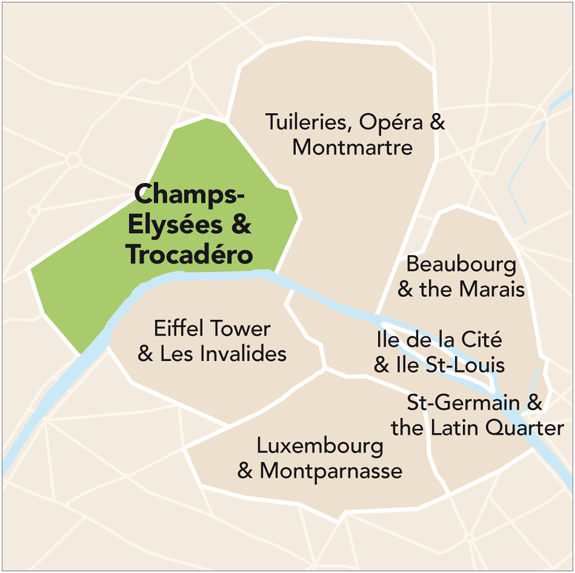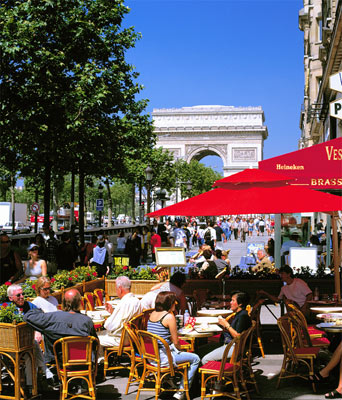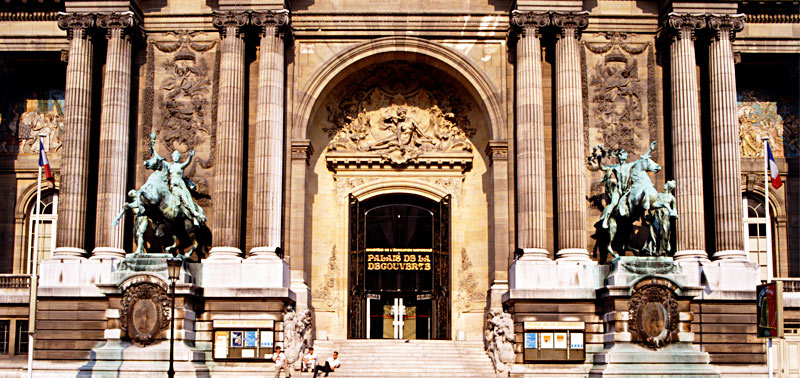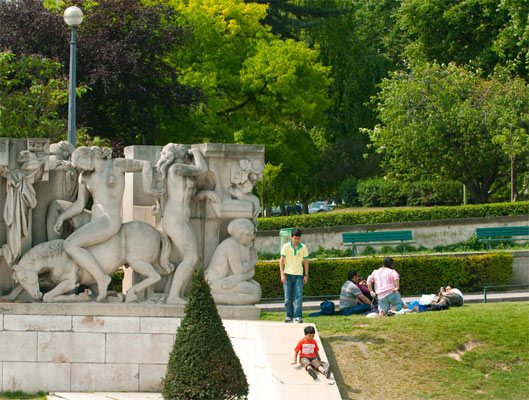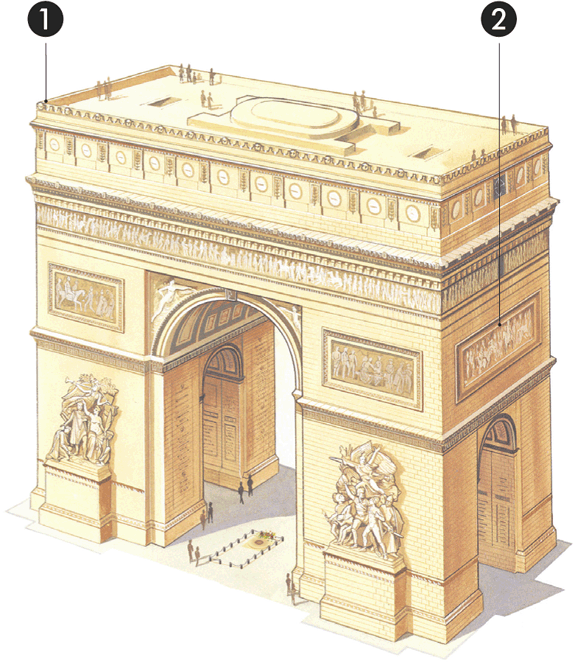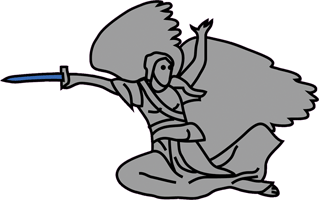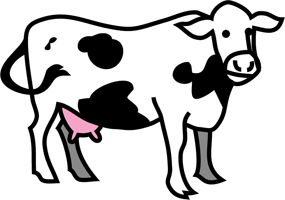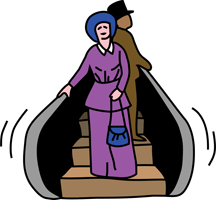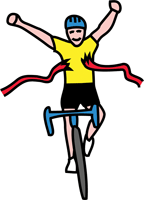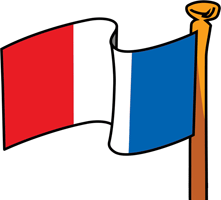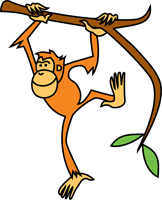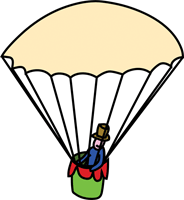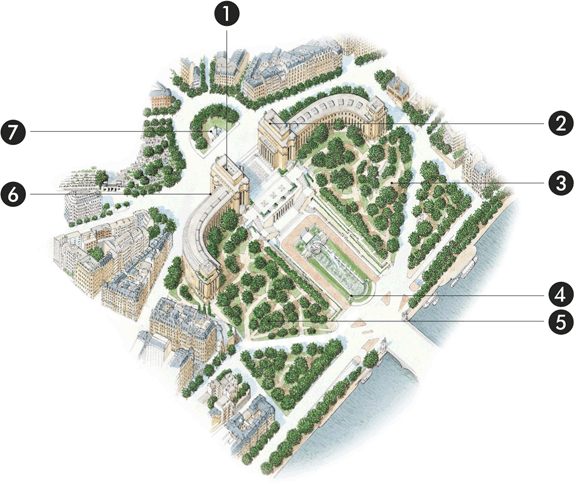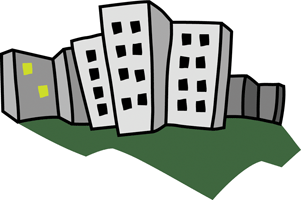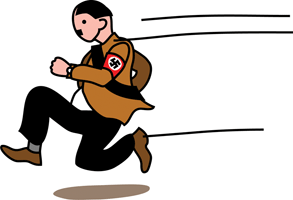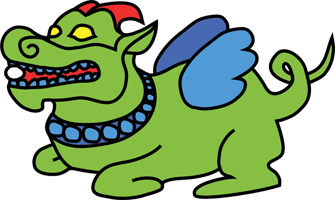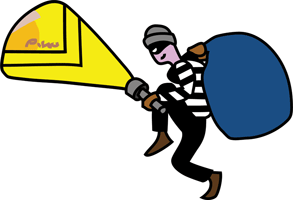< Champs-Elysées & Trocadéro
Arc de Triomphe and Around
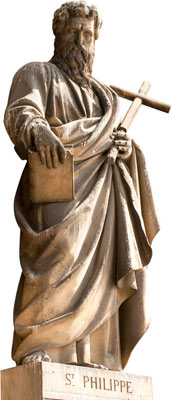
Statue of St Philippe at La Madeleine
Of all the grand avenues that characterize the exclusive area around the Arc de Triomphe, none defines it better than the Champs-Elysées. With its wide pavements, lined with cafés, it is perfect for strolling, and there is always something going on, even on Sundays and during the evening. It is quite long, so it might be useful for little feet to jump on a bus, or take the Métro. North of the Champs-Elysées is a residential area, which closes down when local families are on holiday in August.
1. Arc de Triomphe
2. Grand Palais and Petit Palais
3. Pont Alexandre III
4. Palais de la Découverte
5. Palais de l’Elysée
6. Place de la Concorde
7. Place de la Madeleine
8. Musée Jacquemart-André
9. Parc Monceau
10. St-Alexandre-Nevsky Cathedral
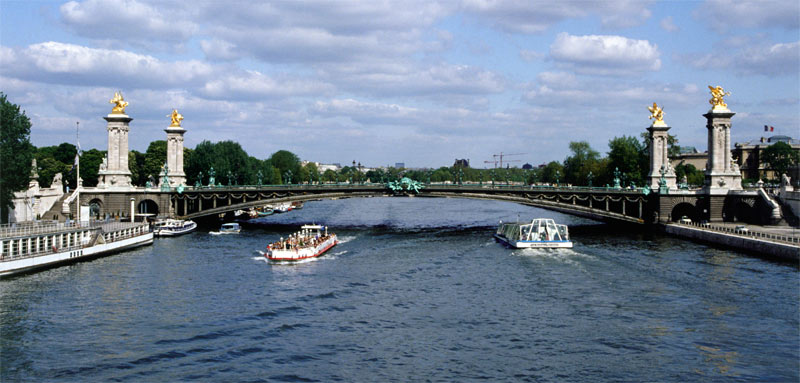
Pont Alexander III, connecting the Left Bank to the Grand Palais
1. Arc de Triomphe
Generals, stars and parades
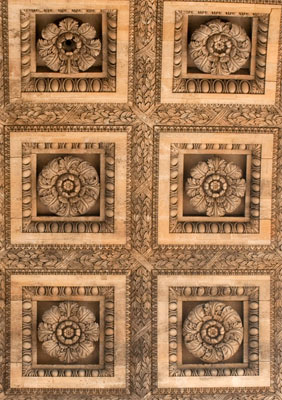
Arc de Triomphe ceiling detail
After defeating the Austrian and Russian troops at the Battle of Austerlitz in 1805, Napoleon commissioned a triumphal arch in the Roman style. However, no sooner were the foundations for the arch laid, than his empire began to collapse. The arch was finally completed in 1836. Four years later, Napoleon’s remains passed under it, on the way to his final resting place at Les Invalides. Since then, both occupying armies and liberating troops have marched through it.
Key Features
1. Spectacular views Baron Hausmann’s star-shaped towngrid is easy to admire from the roof, as is the crazy traffic whizzing around the roundabout below.
2. The Battle of Austerlitz The frieze on the arch’s northern side shows Napoleon’s troops breaking the frozen lakes to drown thousands of enemy soldiers.
• Tomb of the Unknown Soldier An unknown soldier lies buried under the centre of the arch, one among the 1.5 million French soldiers who died during World War I.
• Napoleon’s victories Thirty shields just below the arch’s roof bear the names of the victorious battles fought by Napoleon.
• Military heroes The names of the generals who served in Napoleon’s army are engraved on the inner façades of the small arches. The names of those who died on the battlefield are underlined.
• Triumph of Napoleon A relief on the left base celebrates the peace brought by the Treaty of Vienna in 1810.

Left
Tomb of the Unknown Soldier Middle Military heroes Right Napoleon’s victories
Kids’ Corner
Look out for…
-
Count the number of avenues that radiate from the arch, slicing up the city like a pizza.
-
Spot the statue of a French general on the Champs-Elysées near the Grand Palais. Whose statue is it?
-
Charles Godefroy flew under the arch in 1919 to honour his dead air force comrades. Watch footage of it on
http://tinyurl.com/36bjl45.
All for want of a sword!
La Marseillaise is one of the most famous reliefs on the arch. The sword carried, in this relief, by the symbolic figure of the Republic, broke in 1916, just before the Battle of Verdun. This “bad omen” was covered over.
Fields of glory
When the arch was built, it was surrounded by fields of cows. Even though it may seem like it is located in the centre of Paris, it is in fact a stone’s throw from the edge of the city.
Never give up
In 1940, when the German forces overran France, General de Gaulle refused to accept President Pétain’s decision to surrender to the Germans. He fled to London to continue the fight, and put together an army. During the Battle for Paris, the fearless general arrived at the Arc de Triomphe and walked down the Champs-Elysées, while the city was still full of German snipers. The huge roundabout surrounding the Arc de Triomphe is named after him.
2. Grand Palais and Petit Palais
Babar the elephant’s garlanded, glittering palace
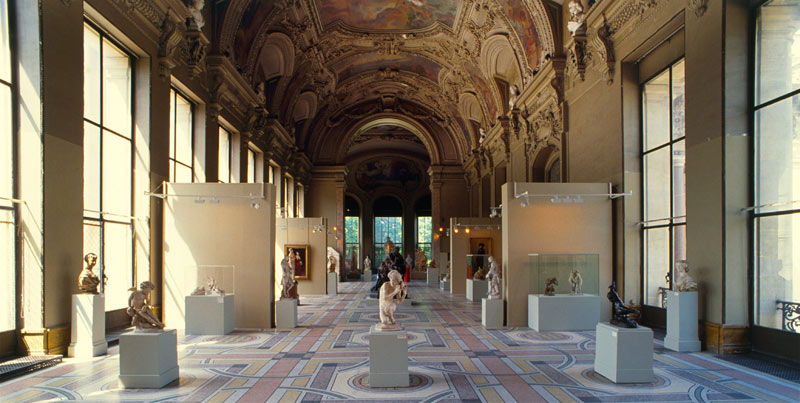
Sculptures on display inside the stunning portico of the Petit Palais
Built for the Exposition Universelle in 1900, the Grand Palais and the Petit Palais both house temporary art exhibitions and shows. The Petit Palais also has an excellent and varied permanent art collection, with Impressionist and Art Nouveau paintings, but the building itself almost steals the show. Decorated with painted ceilings and swirling white garlands, glittering angels on the roof and palm trees in the garden, it looks very much like the palace of Babar, the beloved French children’s book character.
On the opposite side of the road is the larger
Grand Palais, which took more steel girders to build than the Eiffel Tower. The western section of the palace houses the
Palais de la Découverte.
Kids’ Corner
Look out for…
1. The 100,000 buzzing bees that live on the roof of the Grand Palais. You can buy their honey in the museum shop.

2. The statue of a woman with a monkey in Petit Palais. Does she look happy or sad?
What an Exhibition!
In 1900, close to 50 million people visited the Exposition Universelle (Universal Exhibition). Here they were able to ride on the world’s first escalators and watch another wonderful invention, the talking movie. Among the prize-winning inventions were Campbell’s canned soups – the tins still show the gold medal on their red-and-white labels. The Olympic Games were also part of the show, and women athletes took part for the first time.
Whoosh!
Was that the sound of a bicycle whizzing past? The final stage of the world-famous cycling race, the Tour de France, is along the Champs-Elysées every year in July.
3. Pont Alexandre III
Winged horses on the Tsar’s bridge
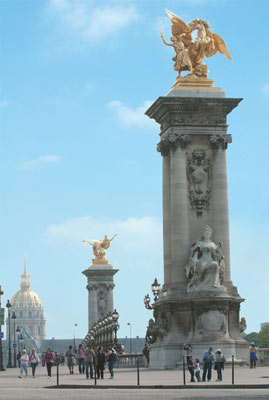
Gilt-bronze statues atop the pillars on Pont Alexandre III
Next to the Petit Palais stands the prettiest bridge in Paris, the glittering Pont Alexandre III, which looks like it belongs in a fairy tale – covered in cupids, cherubs and winged horses. Its design does not really match the character of its namesake, Tsar Alexander III, who ruled Russia with an iron fist, but it was built in his honour to celebrate an alliance between France and Russia. The foundation stone of the bridge was laid by Alexander’s son, Nicholas II, in 1896. It has featured in several films, including the James Bond adventure A View to Kill (1985) and the cartoon Anastasia (1997).
Kids’ Corner
Look out for…
Pont Alexandre III. This is the bridge on which Anastasia fights the evil Rasputin in the animated film about her adventures.
4. Palais de la Découverte
A “palace” of discoveries

The Dragons Elysées, with its underfloor aquarium
How do ants communicate? What is an invertebrate? How does a battery work? The Palais de la Découverte science museum is the place to find answers to some of life’s puzzling questions. A wide range of exhibits covers all aspects of scientific study. The museum was founded by a doctor in the 1930s with the aim of popularizing science. Check out the rat-run, then escape into space in the planetarium. The museum shop has a great array of exciting gadgets and toys. Nearby Avenue Montaigne is a street dedicated to high fashion. The enormous Louis Vuitton store on the Champs-Elysées is the flagship shop of just one of the many great fashion houses that have a presence here.
Kids’ Corner
Temple of fashion
In 1854, a carpenter by the name of Louis Vuitton opened a shop selling trunks on Rue Neuve des Capucines. They became an overnight sensation. Today, the company has shops all over the world, and a giant one on the Champs-Elysées.
5. Palais de l’Elysée
Is the President at home?
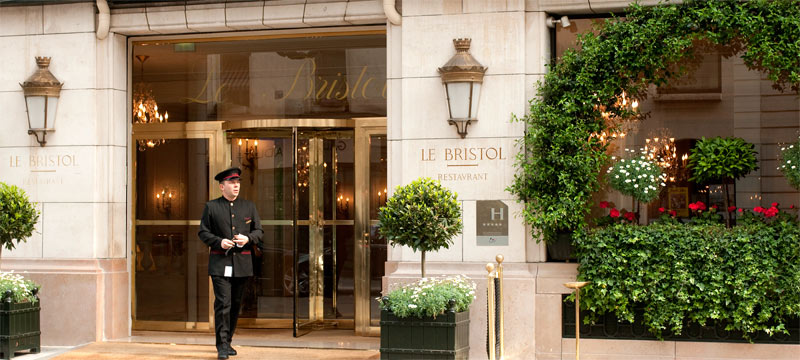
Hôtel Bristol on the exclusive Rue du Faubourg St-Honoré
The official residence of the French President since 1873, the Palais de l’Elysée was built for a count in 1718 in what was then a leafy outpost of the city. During the Revolution, it was turned into a warehouse, a factory and then a dance hall. In 1814, when the Russians occupied Paris, Napoleon signed his abdication here in the Salle d’Argent, before Tsar Alexander I moved in, leaving his Cossacks to camp in the Champs-Elysées. Today, the President of the Republic lives in a modern apartment on the first floor, facing the Rue de l’Elysée.
Kids’ Corner
Flag of our fathers
Fluttering over the Palais de l’Elysée is the French flag, the tricolour. The red and blue stripes are the colours of Paris, worn by the militia who stormed the Bastille. White, the king’s colour, was added a symbol of national unity.
An orangutan at the Palais de l’Elysee
In 1917, an escaped orangutan entered the palace and tried to drag President Poincaré’s wife into a tree in the garden. His successor, the eccentric President Deschanel, was so impressed by the event that, to the alarm of his guests, he took to jumping up into trees during state receptions, pretending to be the orangutan.
6. Place de la Concorde
Revolutionary guillotine and an Egyptian obelisk
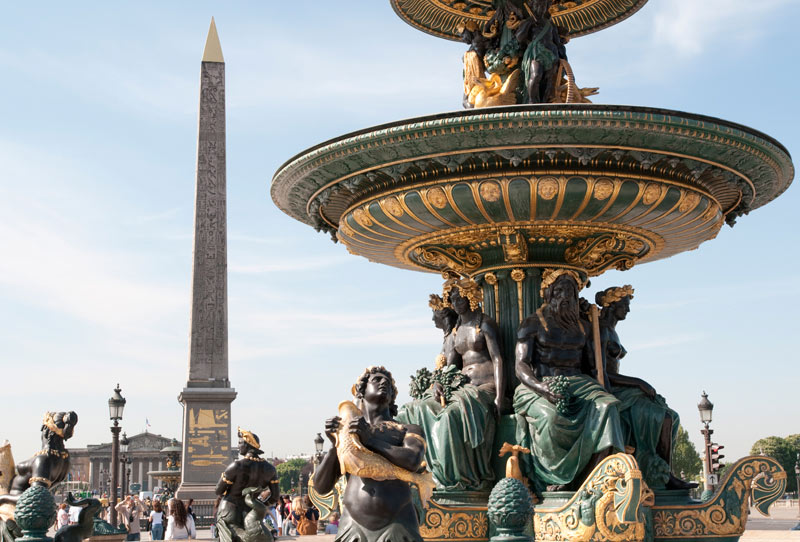
Fountain of River Commerce and Navigation in the Place de la Concorde
The magnificent Place de la Concorde provides stunning views along the Champs-Elysées – north to the Madeleine church, east to the Louvre and south across the river to the Assemblée Nationale. Take the children after dark, when it appears truly magical.
Originally named Place Louis XV, the square was laid out in 1757. During the Revolution it became Place de la Révolution, and was the main location for the guillotine. In 1792–4, the square literally ran with blood in an orgy of killing when over a thousand people, including Louis XVI and his queen, Marie Antoinette, were executed here. After the horrors of the Revolution, the square was renamed Concorde, or “harmony”, in the hope of more peaceful times ahead. On the northwestern corner of the square is one of the most luxurious hotels in the city, the Hôtel Crillon. The identical, imposing building on the northeastern side is the Navy Ministry. The obelisk located in the middle of the square was made 3,200 years ago, and is the oldest monument in Paris. At one time, the obelisk stood in the Temple of Ramses in Luxor, but it was given to the French people by the Pasha of Egypt in 1829. In exchange for this gift, the pasha received a clock that did not work.
Kids’ Corner
Look out for…
1. The eight ladies in Place de la Concorde. Each one represents a French city.

2. The lampposts in Place de la Concorde. Can you spot the boats? They are the symbols of Paris.
7. Place de la Madeleine
The Ten Commandments, fruit jellies and dainty cakes
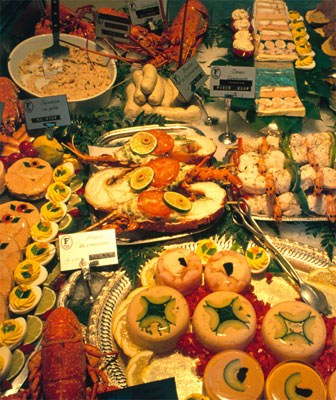
Sumptuous savoury dishes at the city’s most famous food shop, Fauchon
In 1764, work began on La Madeleine, the church dedicated to Mary Magdalene and located in the centre of the square named after it. But the Revolution got in the way and it was only consecrated in 1845, after years of changing plans for its design and usage, which included a stock exchange, a ballroom, a market and a public library. The final design, which mirrors the Assemblée Nationale across the Seine, on the other side of Place de la Concorde, was ordered by Napoleon. He wanted a Roman-style temple, dedicated to the glory of his army, which is why it has no bell and does not face towards Jerusalem like other churches. Look out for the Ten Commandments on its bronze doors.
The square is also home to two luxurious delicatessens, which have restaurants as well. Fauchon at No. 26 offers an array of éclairs and picnic boxes, while Hédiard at No. 21 was the first shop in France to sell tropical fruit; it also offers fruit jellies and cakes. Alexander Dumas, who wrote The Three Musketeers (1844), was the first to try their fresh pineapples.
Kids’ Corner
Look out for…
The oldest toy shop in Paris. Au Nain Bleu, across the road from the Madeleine church, opened in 1836.
8. Musée Jacquemart-André
Spend, spend, spend!
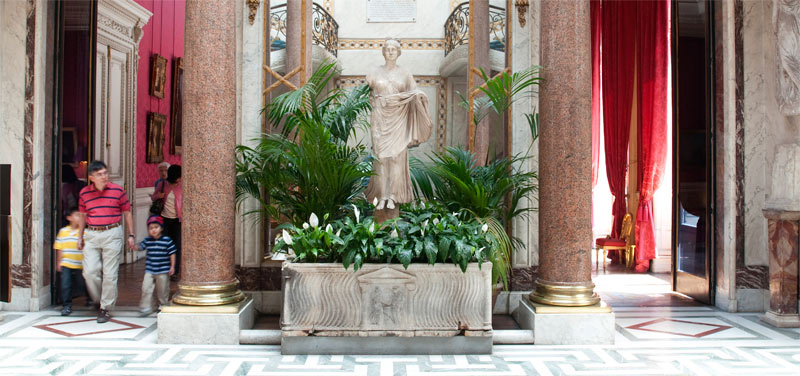
The grandiose Winter Garden of the Musée Jacquemart-André
In 1860, the tiny village of Monceau was annexed to the city of Paris as part of a massive rebuilding project organized by Baron Haussmann, and some of the richest people in France bought land here. Heir to a banking fortune, Edouard André moved here in 1875 and spent a fortune building up one of the most lavish and sumptuous private homes in Paris. His wife Nélie Jacquemart, a society portrait painter, was a shopaholic art collector who travelled around the world amassing paintings, frescos and sculptures. The couple often threw splendid parties to show off their spectacular collection of Renaissance and 17th-and-18th century art, which can still be seen here today. The museum is also an excellent place for children to learn about the luxurious lifestyle of the aristocracy at a time when many Parisians endured grinding poverty.
Kids’ Corner
Look out for…
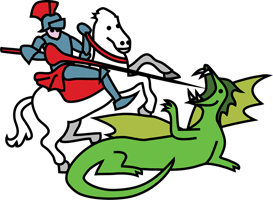
1. The picture of George and the Dragon in the Musée Jacquemart-André. Who do you think won?
2. Look up to the ceiling in the café of Musée Jacquemart-André. What’s odd about the figures looking down at you?
Kittylicious
The pampered felines in Disney’s cartoon The Aristocats (1970), would have been perfectly at home curled up on the sofa of Nélie Jaquemart, in the Musée Jacquemart-André.
9. Parc Monceau
Monuments and a massive tree
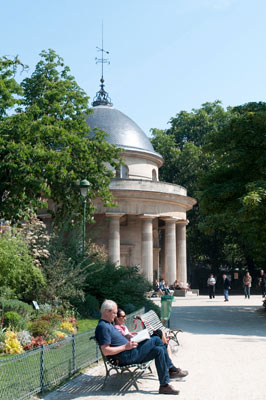
Relaxing near the Pavillon de Chartres, the main entrance to Parc Monceau
With its golden-topped gates, Parc Monceau is Paris’s most elegant park and a favourite with well-dressed local children and their nannies. It is the sort of place where Petit Nicholas, the cheeky schoolboy hero of Sempé’s classic stories, would spend the afternoons, and where writer Marcel Proust liked to take a stroll. The park was created in 1769 by the Duke of Chartres, Philippe d’Orléans, who wanted to have his own English-style garden with curvy paths and funny monuments. Look out for an Egyptian pyramid and a statue dedicated to the famous pianist Frédéric Chopin, who died in Paris in 1849. The biggest tree in Paris, an Oriental plane, is also located here. Its trunk measures a whopping 7 m (23 ft) round.
Kids’ Corner
Look out for…
Can you spot the statue of Frédérick Chopin in Parc Monceau? What instrument did he play?
Balloon antics
The hot-air balloon was invented in France by the Montgolfier Brothers. In 1797, André Jacques Gamerin made the first silk-parachute jump from a hot-air balloon in front of a huge crowd gathered in Parc Monceau. The parachute, which looked like a gigantic umbrella, was at the time an amazing new-fangled invention. Hot-air balloons were first used as observation posts in 1794, during the Battle of Fleurus.
10. St-Alexandre-Nevsky Cathedral
Fantastic onion domes and fragrant incense
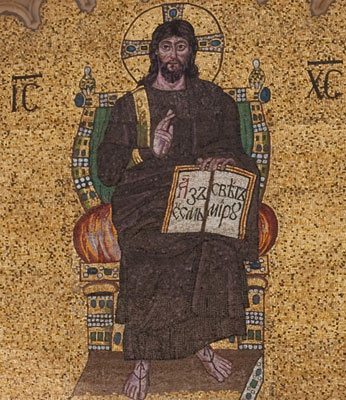
Image of Christ on the exterior of the St-Alexandre-Nevsky Cathedral
The onion domes and incense of the Russian Orthodox St-Alexandre-Nevsky Cathedral bring a breeze from the east and a hint of the exotic to Paris. In the 19th century, many Russians, including aristocrats, writers, painters and revolutionaries, flocked to Paris. In the 1860s, the community had grown so large that a Russian orthodox church was built and the Tsar decided there was need for a Paris office for his notorious secret police. After the Russian Revolution in 1917, many aristocrats fled to France.
< Champs-Elysées & Trocadéro
Palais de Chaillot and Around
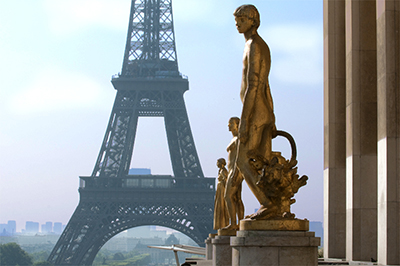
Gilded bronze statue near Palais de Chaillot, with the Eiffel Tower in the background
The area known as the Trocadéro, centred on the Palais de Chaillot, is crammed with fascinating museums that are slightly off the tourist trail, and is a good option for a rainy day. The grand layout testifies to the area’s World Fair heritage; the Modernist Palais de Chaillot was built for the Exposition Internationale in 1937, replacing the old Palais de Trocadéro, created for the one in 1878. The immediate vicinity is full of offices; for shopping and nice cafés, head up to Avenue Victor Hugo. Be aware that the area closes down in August, when the locals go on holiday.
1. Palais de Chaillot
2. Musée Guimet
3. Palais de Tokyo & Musée d’Art Moderne
4. Musée Galliéra
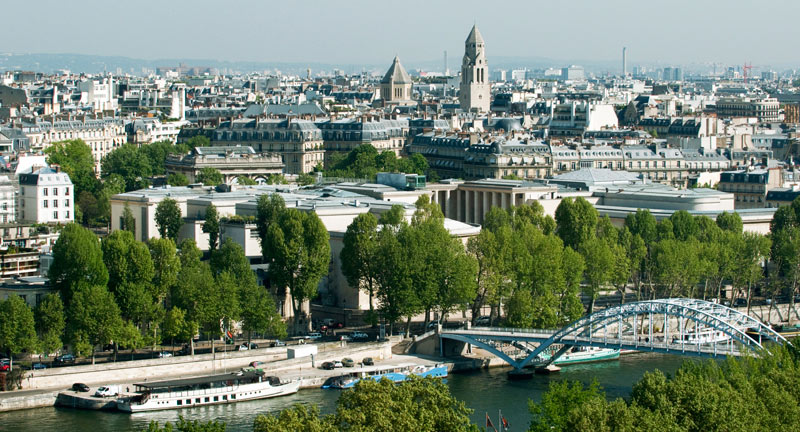
Panoramic view of Paris from the Eiffel Tower
1. Palais de Chaillot
Fishy films and fountains
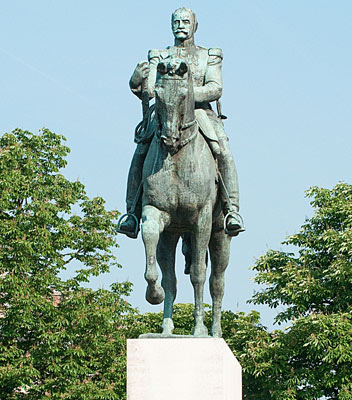
Statue of Marshal Foch, Place du Trocadéro
From humble beginnings as a pastoral village, this part of Paris is now dominated by the monumental Palais de Chaillot, universally known by locals as the Trocadéro. It is the best place from which to gaze at the Eiffel Tower, but also somewhere to take a crash course in architecture, French maritime heritage and the history of human-kind, by visiting its museums. That done, relax at Aquarium de Paris – Cinéaqua, touring its aquarium or taking in a film.
Key Features
1. The Musée de la Marine Come here to see perfect little model ships, the pretty prow of Marie Antoinette’s rowing boat and Napoleon’s sparkling barge.
2. Cité de l’Architecture et du Patrimoine See France’s most famous buildings in miniature at this museum, in the palace’s east wing.
3. Aquarium de Paris – Cinéaqua Stroke a ray, walk through the shark tunnel and gaze at Nemo. Then catch a film in the cinema.
4. Trocadéro fountains Cannons of water fire towards the Eiffel Tower and are lit at night – a spectacular sight.
6. Musée de l’Homme The museum has one of the world’s best prehistoric collections as well as temporary exhibitions.
7. Marshal Foch The imposing statue of Ferdinand Foch, who led the Allies to victory in 1918, stands here. He prophesied that it was not a peace, but only an armistice that would last 20 years.
• Palais de Chaillot The two curving wings of the monumental building are separated by a large terrace that offers a great view over the Trocadéro gardens and the Seine.

Left
Palais de Chaillot Middle Trocadéro fountains Right Aquarium de Paris – Cinéaqua
Kids’ Corner
Look out for…
-
Baby sharks floating around in their see-through eggs at Aquarium de Paris – Cinéaqua.
-
A Japanese carp. It is possible to stroke one in Cinéaqua.
-
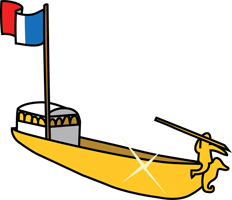
Napoleon’s golden barge at the Musée de la Marine. He used it only once, to inspect the fortifications at Antwerp in 1811.
Knock it off!
In 1925, the architect Le Corbusier had a crazy plan to knock down all of eastern Paris and build 18 giant tower blocks. Find out more at the Cité de l’Architecture et du Patrimoine.
Hitler’s Paris visit
Nazi leader Adolf Hitler arrived in Paris on a sunny Sunday morning in June 1940. He was bowled over by a 10-minute trip to the Opéra at 5.45am, dashed in and out of Place Madeleine, was unimpressed by Place de la Concorde but got out of the car at the Arc de Triomphe and had his photo taken at Trocadéro. He stood solemnly in front of Napoleon’s tomb but did not like the Panthéon. By 10am he was finished and back at the airport, and did not stop to speak to anyone. Hitler may have spent only hours in the capital but the occupation of Paris lasted four long, terrible years during which time thousands of the city’s Jews were murdered. The city had a close shave when his orders to blow it sky high were ignored by the German army.
2. Musée Guimet
Dragons and demons
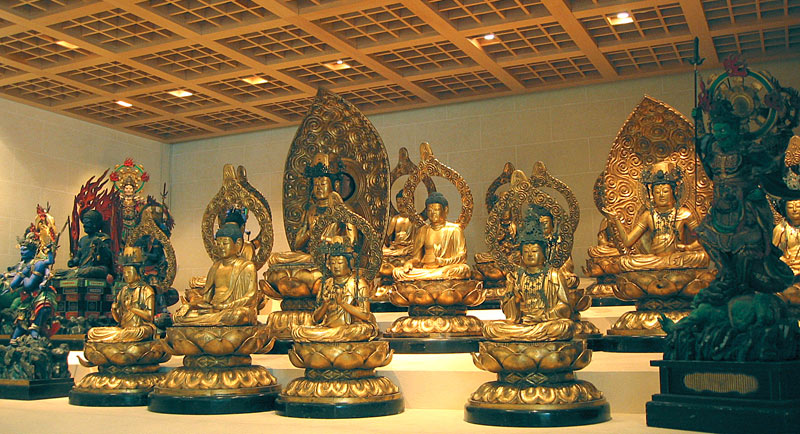
Exhibits in the Musée Guimet
Treasures from the temple of Angkor Wat, including the seven-headed snake demon called the Giants Way, are on display in this museum of Asian art and culture. Originally 200 m (657 ft) tall, the idol was brought to Paris for the Exposition Universelle of 1878. Most of the collection on show was put together by Emile Guimet, who spent his vast fortune travelling in Asia collecting pieces for his personal museum. Mulan fans will enjoy exploring the Chinese collection. Do not miss the goddess Avalokiteshvara, who has a thousand arms.
Kids’ Corner
Things to do…
The Musée Guimet displays an idol of a goddess with a thousand arms. How many arms would you need to do all the things you want?
Enter the dragon
The mythical Makara dragon from Vietnam carries a precious pearl in his mouth that is supposed to give the gift of eternal life. See if you can find him in the Musée Guimet.
3. Palais de Tokyo & Musée d’Art Moderne
Technicolour cows and an electricity fairy
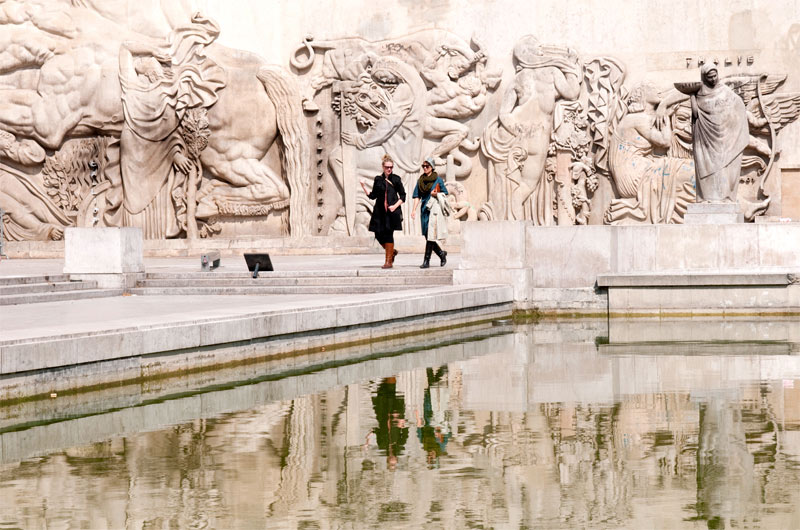
Bas-relief created by Alfred Janniot, along a wall of the Palais de Tokyo
The Palais de Tokyo was built for the World Fair of 1937, when it was the electricity pavilion, and gets its name from the nearby Quai de Tokyo, now Avenue de New York.
The Palais de Tokyo’s east wing houses the light and airy Musée d’Art Moderne, a good spot to introduce kids to modern art since the works are laid out chronologically. See the world turned upside down by the Fauvists, the “Wild Beasts”, who painted blue cows, red trees and pink grass. Move on to see the world squared up by the Cubists. The museum also has two giant canvasses of The Dance by Henri Matisse.
Tucked away in a room of its own is one of the biggest paintings in the world. Raoul Dufy’s La Fée Electricité (The Electricity Fairy), which was commissioned by the Parisian Electricity Board in 1936, tells the story of electricity from Zeus and his fire bolts to Edison.
The other wing of the Palais de Tokyo is the city’s trendiest contemporary art venue, where the temporary exhibitions are always cutting-edge and eye opening.
Kids’ Corner
Things to do…
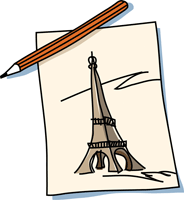
1. Find inspiration in the Musée d’Art Moderne. Draw or paint a picture of the Eiffel Tower and send it instead of a postcard.
2. Make some shadow puppets. Get some straws, sticky tape and paper from the supermarket. Draw and cut out some monsters and people. Stick them on the straws. Turn down all the lights but one. Shine the light on the wall and place the puppets in front.
Theft of the century
On 20 May 2010, a thief smashed a window and broke into the Musée d’Art Moderne. CCTV cameras filmed him taking five pictures out of their frames. No one knows why the burglar alarm failed to go off but when the staff came they found The Pigeon with the Peas by Pablo Picasso, La Pastorale by Henri Matisse, Olive Trees near Estaque by George Braque, Woman with a Fan by Amedeo Modigliani and Still Life with Chandeliers by Ferdinand Leger had gone missing. Look them up on the Internet. Together they were worth €100 million, so keep your eyes peeled!
4. Musée Galliéra
Dresses, handbags and hats
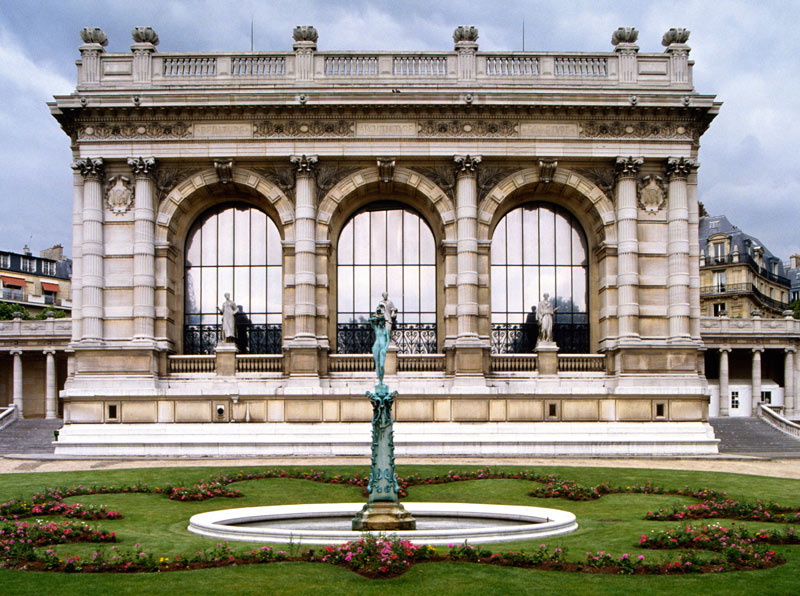
Rear façade of the Musée Galliéra, with a fountain
Just a stone’s throw away from Paris’s famous fashion houses, this museum is located in the elegant 19th-century Palais Galliéra, a Renaissance-style building built by Gustave Eiffel for Duchesse Maria de Ferrari Galliéra.
On display are mountains of fascinating dresses, underwear, hats, handbags, umbrellas, kids’ clothes and dolls’ wardrobes from the 18th century to the present day. Some of the outfits have been worn by famous people, such as Marie-Antoinette and Empress Josephine, while others have been donated by fashionable women, including Baronne Hélène de Rothschild and Princess Grace of Monaco. The museum displays these creations in rotation, twice in a year, through temporary exhibitions.
